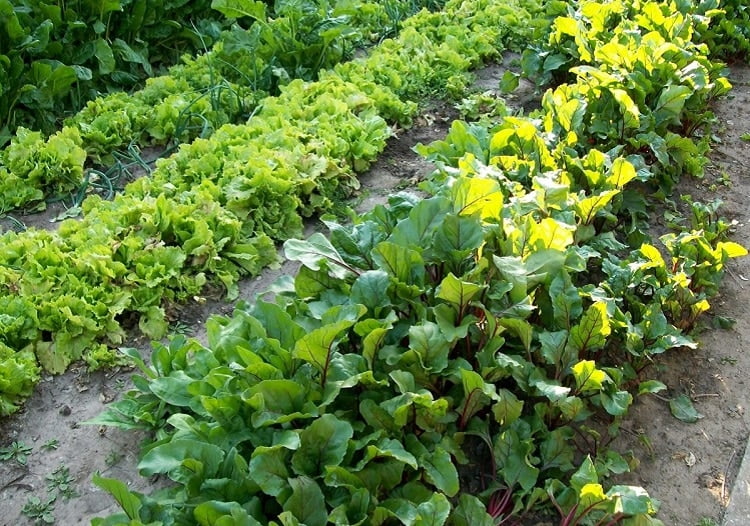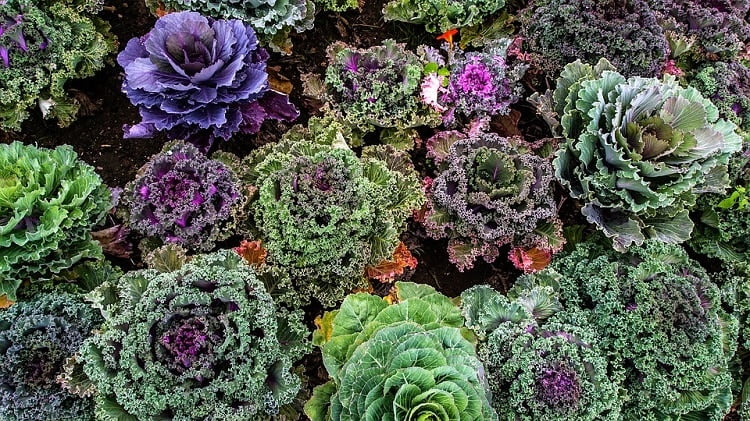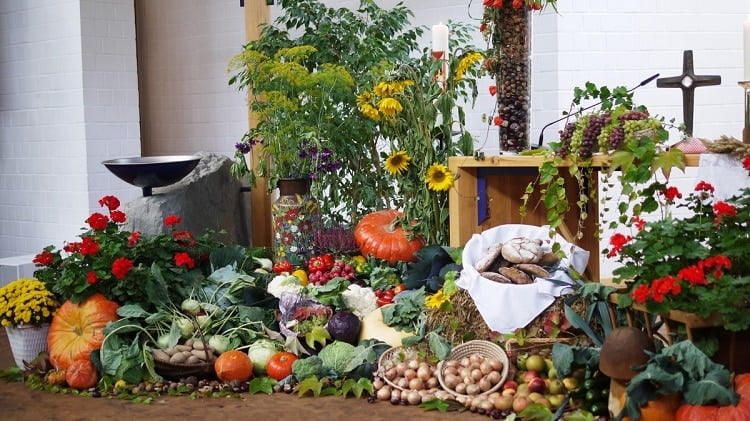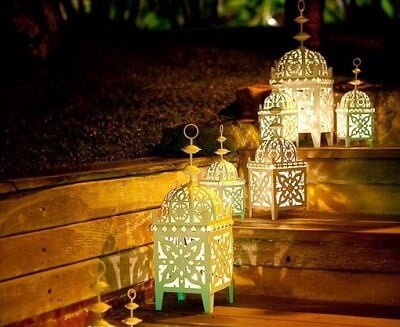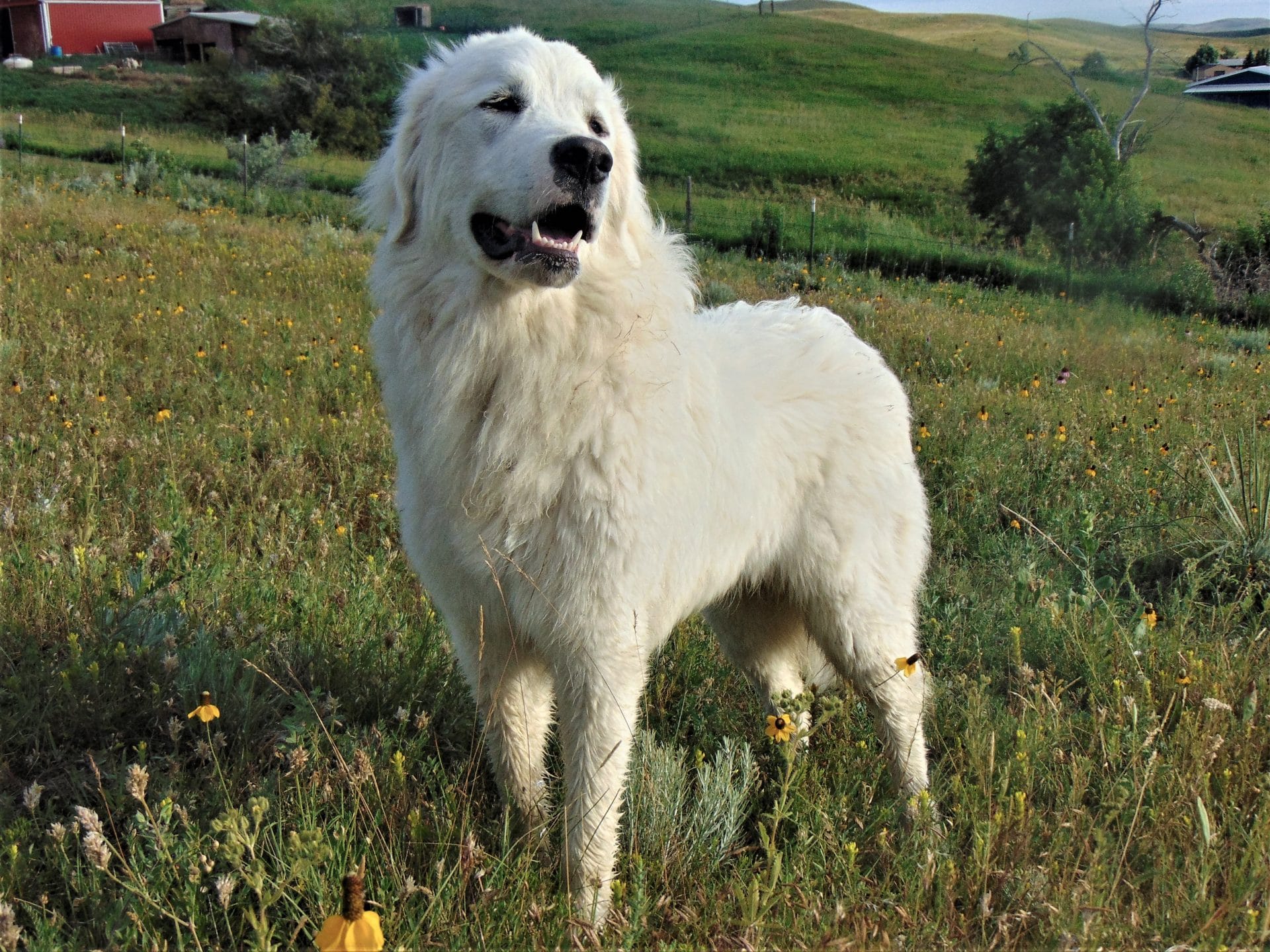Do you want a different garden with a unique design? There are many ways to create a beautiful contrast between your plants, but one of the easiest ways consists of planting vegetables and flowers together. You can have both edible and decorative plants around, and it’s not complicated at all to keep them in the same place.
Mixing Vegetables and Flowers
Planting vegetables and flowers together in a garden is not so unheard of. In fact, a long time ago, it was quite likely to see vegetables and other edibles mixed with edible flowering plants. Even today, the practice is widespread among those with a smaller garden, and who cannot afford to separate the two.
Vegetables can have a spectacular look even on their own. However, the effect is complete if you combine them with other plants that are purely decorative. Mixing the pure green of vegetable leaves with the bright colors brought by plants will have a great visual impact, and will allow you to combine the useful with the beautiful.
Why Choose to Plant Vegetables and Flowers Together
Before opting for such a garden, you should first explore the advantages of such a decision. In case you haven’t decided yet, here are a few reasons why you should be planting vegetables and flowers together.
1. Pollination
If you want to make sure your vegetables stay pollinated, try planting some brightly-colored flowers nearby. Flowers are the primary attraction for pollinators like bees or butterflies. They are vital for a healthy existence of plants, and the more pollinators, the more bountiful the development.
2. Keeping Parasites Away
Flowers do not attract insects with their scent and color; they can also keep them away. Vegetables can easily become the victims of parasites. However, certain types of flowering plants can keep these pests away. They can either attract dangerous insects that would destroy vegetables, or keep all threats away with their flashy appearance and perfume.
3. Keeping the Plants Healthy
Some flowers and herbs bear the nickname of doctors, as they maintain the health of other plants around them. Chamomile is one of those plants, so adding it to your garden would not only improve its looks.
What to Know Before Planting Vegetables and Flowers Together
Once you’ve decided to combine the two types of plants in your garden, you should make sure you know all the perks of it. To avoid unpleasant situations, it’s important to be prepared for anything.
4. Pick the Flowers Carefully
Vegetables can easily grow surrounded by any kinds of flowers. However, you might not want to pick something that requires a lot of pesticides. This way, you won’t have to spray these harmful chemicals on your crop as well. You probably grow vegetables to eat them, so stay away from any sensitive flowers that need chemical treatment.
5. Make Sure the Growing Conditions Are the Same
If you want all your plants to survive, it’s better to pair them up based on the growing conditions they require. Choose many sun-loving flowers, as most vegetables thrive if they spend at least six hours in direct sunlight. However, you can cover those shaded areas as well. Here, you can have more flowers surrounded by vegetables like lettuce.
6. Judge the Vegetables from a Decorative Perspective
So far, you probably thought only about the practical use of vegetables, namely for eating. However, if you want the most successful combinations, you should start looking at the aspect, length, and shape of the vegetables. Then, compare it with the aspect of the flowers, and see what looks best when put together.
7. Not Only Vegetables Can Be Edibles
You can pick some edibles flowers as well, as they will complete your vegetable garden successfully. The most popular type is probably borage, which has other benefits. Its aspect and scent can keep some pests away, including cabbage worms. Violets are edible as well, and their pretty hues will be the splash of color you have been looking for all along.
Some Landscaping Ideas
Your garden won’t only be practical, so you should find some creative ideas to achieve a dramatic appearance. You can feel free to try anything, but some tricks are easier to apply and will look a lot better.
8. Edging
If you want to incorporate plants that develop vertically, you might be afraid they will take over your entire garden. There is an easy way to tame them, and that’s through edging. You can plant them as a border or background to smaller plants, and build a frame to let them hang to it.
Given the fact that the plants won’t have so much space to grow, you can help them thrive. Before planting, add some organic matter in the soil, and keep adding fertilizers after the plant starts growing.
The best plant that fits this description is the squash, which can serve both a decorative and a practical purpose. It has big nicely shaped leaves and flowers in bright colors that will give a dramatic aspect to the garden. Then, as soon as the squashes start growing, you will acquire a new splash of color for your garden.
9. Create a Flower Border
The perfect trick to decorate the garden is to plant the flowers in a dramatic border around the vegetables. Pick whatever plants you like, but it’s better if they grow a little taller than the vegetables. Then, plant them in a border that surrounds the short-growing plants.
If you’re looking for some tips, choose flowers that grow in bright colors. These can border different types of cabbages and lettuces in all colors and textures. Uniformity looks good, but you can easily opt for something more diverse.
10. Create Patterns with the Crops
If you have a big garden, you can play a bit with the crops. You can use the space you have smartly by creating geometrical patterns with the plants themselves. There are many of shapes you can choose from, so be as creative as you like. You can either plant the vegetables in the middle and surround them with a circle made of flowers, or create alternative patches of greens and colors. Whatever you choose, make sure you leave some space between them. This way, you can have easy access to water, tend them, and do the harvesting without disturbing the others.
Some Decorative Plants to Choose From
All plants can serve a decorative purpose apart from the practical one. Some of them look slightly better than others and can make felicitous combinations both with greens and with flowers. Based on their shape and growing conditions, learn how to care for them.
Decorative Vegetables
Hanging plants are a great solution for a small garden, but they can work just fine in a big garden as well. All breeds of beans and peas can easily grow a dramatic column if you give them a structure to hang on. Some of them grow pretty flowers as well, so you can achieve both the green and the colorful effect.
Foliage is another category worth considering when choosing these plants. Asparagus, fennel, or cardoons are those greens that sport some impressive leaves, some of them also edible. Herbs can easily fit this category, as this type of plants is well-known for its leaves. However, most of them have pretty flowers too, so don’t refrain from planting herbs in your garden.
Decorative Flowers
Here it’s a lot simpler, as most anything can work. You probably want a dramatic effect, so any color you add to your garden should do the trick. However, you might want to attract insects as well, and an excellent choice would be calendula, thyme, or comfrey. This way, the pollinating insects will take care of both your flowers and your vegetables.
If you don’t have enough means for planting vegetables and flowers together, there is an alternative. Plenty of vegetables have fabulous flowers, and you can keep them for the blooms, not only for the fruits. One of the most exquisite flowering vegetables is the humble carrot, which makes beautiful white and pale lilac flowers.
Radish is another vegetable full of surprises. At first, you might find it unappealing, as many people choose to grow it merely for the practical purpose. If you let it grow without harvesting for a season, it will surprise you next spring with some big and bright flowers in a nice purple shade. In fact, you can allow most vegetables to bloom and make no difference between the plants in your garden.
Summing Up
Planting vegetables and flowers together is not only a helpful strategy for its looks, but also for its functionality. Hoarding all the plants together is great if you have a crowded garden, but the choice is beneficial for both of them. You can help the pollination process or protect the crops from pests and parasites while having a beautiful landscape in your backyard. Get as creative as you like when choosing the plants, but make sure you pay attention to their needs and requirements.





